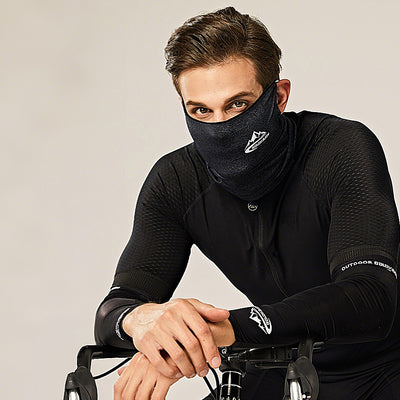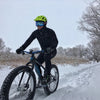What are some tips for cycling safety along these routes?
Here are essential cycling safety tips for navigating routes in the US, tailored to help you stay safe and enjoy your ride:
1. Prepare Your Equipment Thoroughly
- Check Your Bike: Before each ride, inspect tires for wear or debris, ensure brakes work smoothly, and verify that gears shift properly. Use a bike pump to maintain optimal tire pressure (refer to your tire’s sidewall for recommended PSI).
-
Wear Proper Gear:
- Always wear a certified helmet (snug-fitting and adjusted for your head).
- Dress in bright, reflective clothing (especially during low-light hours) and use reflective tape on your bike and gear.
- Wear padded cycling shorts for comfort on long rides, and non-slip shoes to secure your feet to pedals.
-
Carry Safety Essentials: Pack a repair kit (inner tubes, tire levers, patch kit), a multi-tool, a pump, and a first-aid kit. Bring extra water, snacks, and a mobile phone with a fully charged power bank.

2. Follow Road Rules and Signals
- Obey Traffic Laws: Treat your bike as a vehicle. Stop at red lights and stop signs, use hand signals to indicate turns (left arm extended for a left turn, right arm extended up for a right turn), and ride with the flow of traffic (not against it).
- Stay Visible: Ride in the right portion of the lane (not too close to the curb, which may have debris) to make yourself visible to drivers. Avoid riding in blind spots of trucks or buses.
- Use Lights and Reflectors: Install a front white light and a rear red light (flashing mode is recommended for daytime visibility). Attach reflectors to your wheels, pedals, and bike frame.
3. Plan Your Route and Stay Informed
- Research the Route: Study the terrain (hills, descents, paved vs. gravel sections), check weather forecasts, and note rest stops, bike shops, and emergency services along the way. Use apps like Google Maps, Strava, or RideWithGPS to map your route and share it with a friend.
- Be Aware of Local Regulations: Some trails or roads may have specific rules (e.g., bike-only paths, speed limits, or seasonal closures). For example, national parks may require permits or have restricted areas.
- Check for Wildlife and Terrain Hazards: In rural areas, watch for animals (deer, coyotes, etc.) and avoid sudden movements that might startle them. On mountain routes, be cautious of loose gravel, potholes, or fallen branches.
4. Prioritize Safety in Group Rides or Solo Travel
- Ride in a Group Responsibly: If cycling with others, maintain a safe distance (at least one bike length) to avoid collisions. Communicate obstacles (e.g., “hole left!” or “car back!”) clearly to fellow riders.
- Solo Ride Precautions: Let someone know your itinerary and expected arrival time. Carry identification and emergency contact information, and avoid remote routes if you’re unfamiliar with the area.

5. Manage Fatigue and Health Risks
- Stay Hydrated and Fed: Drink water regularly (aim for 16–20 oz per hour in warm weather) and eat energy-rich snacks (nuts, energy bars, bananas) to prevent cramps and low blood sugar.
- Take Breaks: Schedule short rests every 1–2 hours to stretch, check your bike, and recharge. Avoid overexertion, especially in extreme heat or cold.
- Protect Against the Elements: Wear sunscreen (SPF 30+), sunglasses to block UV rays and debris, and a rain jacket if inclement weather is forecast. In cold weather, dress in layers to stay warm without overheating.
6. Interact Safely with Motorists and Pedestrians
- Be Predictable: Ride in a straight line and avoid sudden swerves. Signal your intentions clearly, and make eye contact with drivers at intersections to ensure they see you.
- Avoid Distractions: Do not use headphones (or use only one earbud to stay aware of surroundings). Keep your focus on the road, not on your phone or navigation device while moving.
- Respect Pedestrians and Other Trail Users: On multi-use paths, yield to pedestrians and announce your presence with a bell or verbal cue (“on your left!”) when passing.
7. Handle Emergencies and Breakdowns
- Know How to Fix a Flat Tire: Practice changing a tire before your trip to save time and avoid frustration on the road.
- Stay Calm in Accidents: If you fall or encounter a collision, check for injuries first. Call 911 if there’s severe harm, and move to a safe location away from traffic. Document the incident (photos, witness contact info) if involving a motor vehicle.
- Carry a Bike Lock: When stopping for breaks in towns or cities, secure your bike with a sturdy lock to prevent theft.
8. Adapt to Regional Hazards
- West Coast Routes (e.g., Pacific Coast Highway): Watch for strong coastal winds, narrow shoulders, and steep descents. Be cautious of fog reducing visibility.
- Mountain Routes (e.g., Appalachian Mountains): Use low gears for climbs, and apply brakes gradually on descents to avoid overheating. Watch for gravel or loose rocks on roads.
- Desert or Hot Climates (e.g., Route 66 in the Southwest): Ride early in the morning or late afternoon to avoid peak heat, and carry extra water (at least 1 gallon per day in desert areas).
- Florida’s Overseas Highway: Be mindful of crosswinds on bridges, and stay hydrated in humid conditions. Watch for sand or debris on the road after rain.
By following these tips, you can minimize risks and enjoy the diverse landscapes and experiences that US cycling routes offer. Always prioritize safety, stay prepared, and ride with awareness of your surroundings!
Categories
Recent Posts

Newsletter Signup
Enter your email to receive daily news and get 20% off coupon for all items.
Popular Products
Magnetic Absorption Half Face Mask
Normaler Preis
$14.50
Winter Cycling Gloves for Men - Thermal Gloves for Skiing Snowboarding Cycling
Normaler Preis
$19.90
Winter Neck Gaiter Face Cover - Thermal Face Mask for Skiing Cycling
Normaler Preis
$13.30





